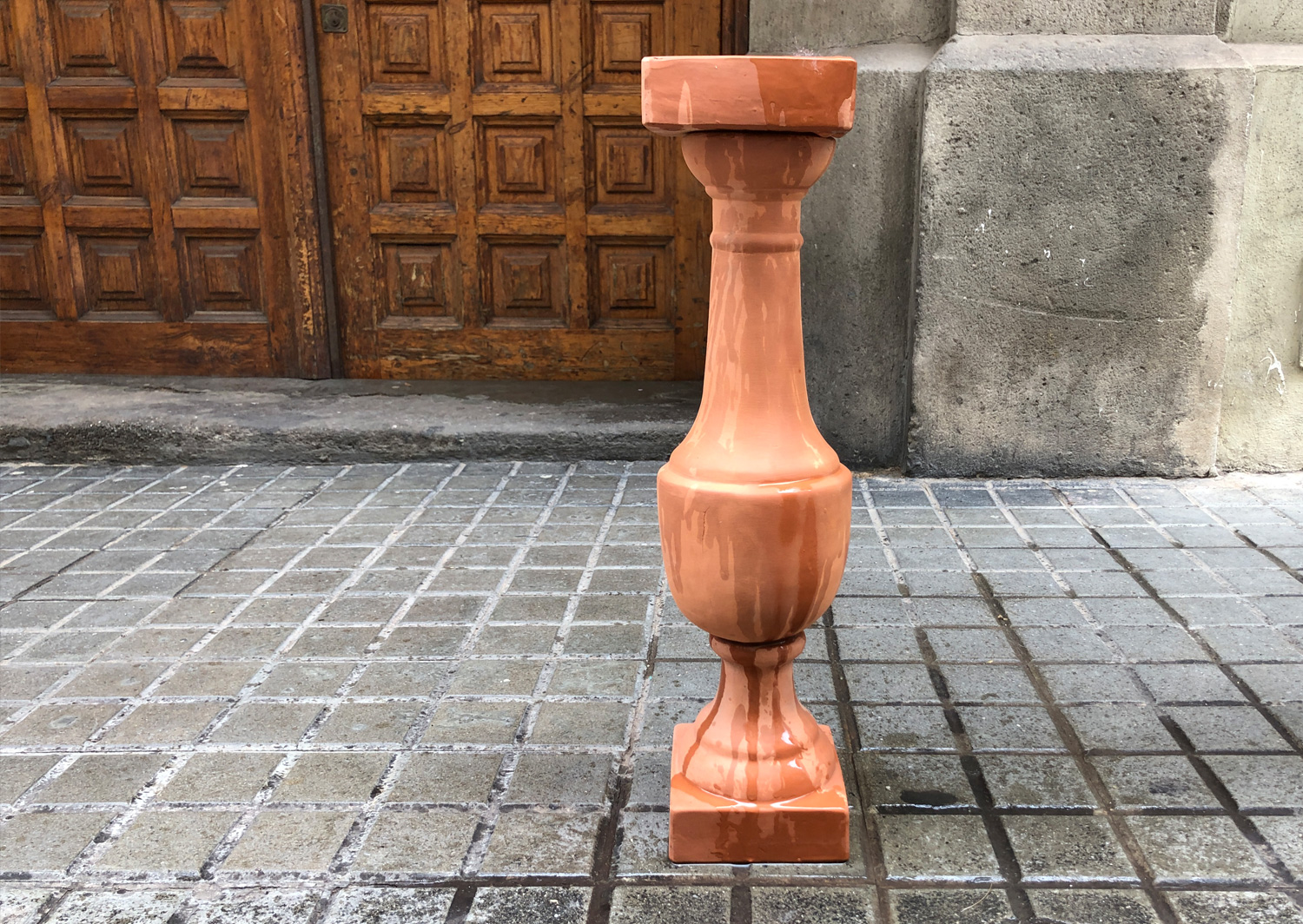


Marc Larré Casa Batllori – Co-dos


Clay comes from the earth and has been used since the beginning of time. Water makes it moldeable; air and fire dry it up, making it resistant. It changes its colour and textures with time but yet, it remains strong. It has adapted its form across the ages to reflect your ideas and needs. It is a vessel, however it’s the space within it that makes it useful.

Following in the line of his recent work about the material heritage of Barcelona in the space where it rubs against the unregistered local history, with what is no longer heritage (the bodies); Marc Larré works in collaboration with Casa Batllori, an old clay workshop more than two centuries old that still survives in the heart of the Sants neighborhood.
The proposal consists of recovering the collection of molds preserved in the warehouse and using them to manufacture a series of hybrid objects that collect architectural forms that have shaped the city and specifically the Sants neighborhood (such as chimneys, tiles, and canals) on one hand, and textures and forms that reflect the recent history of the city – undocumented due to its ephemeral, irrelevant, minority nature – on the other.
In the clay pieces made in collaboration with Andreu Batllori, we see the same gesture, the same torsion of the clay conforming to something that is no longer architecture, not even ornamental, it is the vernacular, the singularity of an impossible body to mold. It is along these lines that the idea of the “codo” (elbow in Spanish, also meaning joint in this case) serves to articulate all the pieces made in the workshop. On one hand, “codo” has the prefix co- indicating collaboration, union or in company. Hence the expression “trabajar codo con codo” (literally translated to working elbow by elbow, meaning to work side by side). On the other hand we have the word “dos” (two): two things that fit together.
The joint is a point of attachment that provides the possibility of movement, its nature is not static, its function is to articulate. It is a dualism where there is no duel or opposition, there is a sum of forces to multiply the effects. Perhaps it is a way to pay homage to the cooperative tradition of the Sants neighborhood and its associative fabric.
HISTORICAL CONTEXT
The Batllori family have worked on this land for the past two centuries. Mariano Batllori Jubert opened Casa Batllori in 1792 and dedicated it to clay. Francisco Batllori Munné developed the business and constructed a property to pass on to his descendants, and these descendants, each in their own way continued the family business of working with clay. Barcelona expanded, Sants developed, soon it seemed as though machines were everywhere; Modernist buildings looked like cakes, and cakes were available to buy; there was conflict, there were wars, there was hunger. Then came peace, new jobs, technology and plastic.
The Batllori family went through all these changes, and adapted to the times. Before these roads in the old quarter of Sants had a name, this family of potters worked outdoors on an undeveloped plot of land. The sun dried the clay, and there was space. Their world was mainly horizontal. As their surroundings became vertical, drainage pipes, gutters and tiles spread to new heights. Grandfather Francesco Batllori saw the rise of ornamental architecture and the business prospered with it. There is a huge ornamental vase in the entrance of the old shop – this is one of three reproductions made: the second lives in the “palacete”, Celler Güell, and the third resides in Casa Golferichs. After the civil war, in a famished economy, Casa Batllori tried to win itss daily bread by cookingbread cooking kitchen utensils, such as pans, basins and mortars in its huge, round brick oven.
Clay is still present in our daily lives, clay peças bring paella to tourists, coffee cups help wake us up in the morning and potted plants keep us closer to nature – what’s missing are the multitudes of expert hands capable of molding clay. “What happens is that the production has been molded to the times Andreu explains with emotion of knowing that he will probably be the last member of the family saga to keep the business alive.
Source texts: Casa Batllori por MG, Time Out (2013), L’obrador Casa Batllori de Sants, by Manel Carrera i Escudé (2017), Casa Batllori: l’últim reducte d’artesania terrissaire a Sants, by el3 (2007), El último ceramista Batllori, 8 generaciones moldeando la historia de Sants-Montjuic by el Tano (2015)
Source archive images: Municipal Archive of the District of Sants-Montjuïc (AMDS)
Compartir